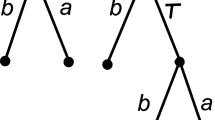
Overview
- Presents a comprehensive and up-to-date guide to the theory and practice of concurrency
- Examines the ability of CSP to describe and enable reasoning about parallel systems modelled in other paradigms
- Contains exercises throughout, and supplies supporting resources online
- Includes supplementary material: sn.pub/extras
Part of the book series: Texts in Computer Science (TCS)
Access this book
Tax calculation will be finalised at checkout
Other ways to access
About this book
Similar content being viewed by others
Keywords
Table of contents (20 chapters)
-
Front Matter
-
A Foundation Course in CSP
-
Front Matter
-
-
Using CSP in Practice
-
Front Matter
-
Reviews
From the reviews:
“This book is divided into four parts … . Part I is designed for an audience of both undergraduate and graduate computer science students. … Part II is designed for people who are familiar with Part I and have fairly theoretical interests. … Part III is intended for people who … want to be able to use them in a better way, or who are specifically interested in timed systems. Part IV is designed for people who already understand CSP.” (Günther Bauer, Zentralblatt MATH, Vol. 1211, 2011)Authors and Affiliations
Bibliographic Information
Book Title: Understanding Concurrent Systems
Authors: A.W. Roscoe
Series Title: Texts in Computer Science
DOI: https://doi.org/10.1007/978-1-84882-258-0
Publisher: Springer London
eBook Packages: Computer Science, Computer Science (R0)
Copyright Information: Springer-Verlag London Limited 2010
Hardcover ISBN: 978-1-84882-257-3Published: 25 October 2010
Softcover ISBN: 978-1-4471-2600-3Published: 03 December 2012
eBook ISBN: 978-1-84882-258-0Published: 10 October 2010
Series ISSN: 1868-0941
Series E-ISSN: 1868-095X
Edition Number: 1
Number of Pages: XVIII, 530




